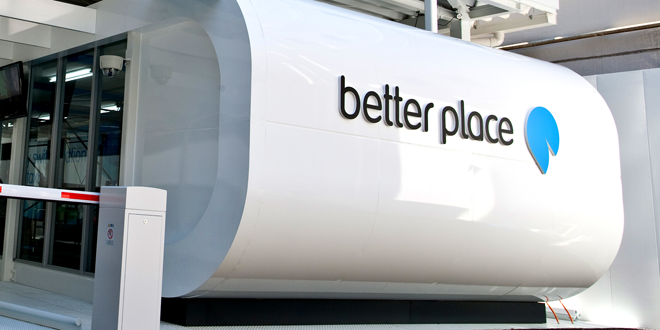Does anybody remember Better Place? It seems quite a few people do, especially in Israel. Shai Agassi is one of many brilliant businessmen to come from the country that many know as Silicon Wadi or the Start-Up Nation, but according to Brian Blum, the author of the new book Totaled, “Agassi was, and remains one of the smoothest-talking, charismatic entrepreneurs the high-tech world has ever seen.”
Agassi has often been compared to his idol Steve Jobs and to his EV industry colleague Elon Musk. Like Elon, Shai was motivated by a sincere desire to free the world from fossil fuels. He came from the software industry, and had several good ideas for bringing a dose of Silicon Valley mojo to the auto industry. He also had an impressive talent for inspiring others, specifically for convincing investors to buy into his vision.
As Tesla founders Martin Eberhard and Marc Tarpenning did, Agassi and his partner Andrey Zarur considered a range of different technologies as a replacement for oil, including hydrogen and compressed air, before deciding that battery-electric vehicles were the best choice.
Like the Tesla founders, Agassi thought long and hard about why electric cars had failed in the past. However, while Elon Musk and his merry men concentrated on sexing up the EV’s image, Agassi focused on range anxiety.
In 2007, when Agassi launched Better Place, battery swapping sounded like a clever solution to a couple of thorny problems. Robotic swap stations would eliminate long charging times, and a scheme to charge drivers by the mile, similar to the cell phone model, would bring down the daunting purchase costs of battery-powered EVs.
By the way, Agassi did not invent automotive battery swapping. Totaled tells us that a subsidiary of General Electric started doing it back in 1910, and the business continued for 14 years.
Like Elon, Shai envisioned a car that could be updated with new features like a computer application. Another good idea he had was that of establishing EVs in a “beta country” where he could demonstrate the entire ecosystem he had in mind. Israel was a perfect candidate – a virtual island with high gas prices and good reasons to want to free itself from imported oil.
I always thought the sad thing about the Better Place saga was that, while Agassi had a number of good ideas, his company became identified with one bad one – battery swapping. One of the interesting things we learn from Totaled is that, contrary to popular belief, battery swapping wasn’t the centerpiece of Better Place’s business plan – Agassi and his team foresaw that most charging would take place at home, swapping was seen as a way to enable long trips (and as a psychological security blanket to soothe range anxiety).
Be that as it may, the press fixated on Better Place’s battery swap stations, and the tragic flaw wasn’t hard to see. Every EV-maker insists on using a different form factor for its battery packs, and there was never any chance that they would agree on a standard. Furthermore, at best swapping could have been a transitional technology – faster charging times and/or wireless charging were bound to make it unnecessary sooner or later. In the event, there wasn’t even a transition period – when Tesla deployed a couple of swapping stations in 2014, it found little or no demand from drivers, and soon abandoned the whole idea. It turned out that DC fast charging was, and is, quite sufficient to enable long-range driving.
Be that as it may, the story of Better Place’s remarkable rise and ferocious fall is a compelling one, and Totaled tells it in great detail and in fine style. Agassi won the support of deep-pocketed investors and Prime Minister Shimon Peres, convinced Nissan/Renault CEO Carlos Ghosn to cooperate with his company, and came tantalizingly close to success.
Better Place built several swap stations, but the only vehicle that implemented its technology was the Renault Fluence ZE, which was not exactly a big hit. Better Place planned to order 100,000 of the electric sedans, but only about 4,000 were sold, and production of the model ceased in 2014. When Better Place filed for liquidation in 2013, then-CEO Dan Cohen noted with understatement that “support from the car producers was not forthcoming.”
This is a lively read, with some great stories – Agassi’s career has been an interesting one, with plenty of parallels to you-know-who. Better Place may be gone, but its history is worth learning, not only as a cautionary tale, but as a possible source of good ideas that still haven’t been followed to their logical conclusions.










































































































